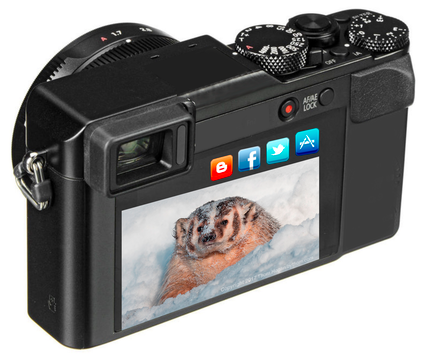As we see the overall demand for cameras shrink and shrink and shrink, it isn't camera companies that go away. The fact that Pentax is still designing and selling DSLRs should tell you that camera companies don't die in Japan. They just morph while getting physically smaller and finding a bigger parent to shield them.
Just tracking the last four full years:
- 2013 shipment value total = 1.671b yen
- 2014 shipment value = 14.4% decline
- 2015 shipment value = 6.7% decline
- 2016 shipment value = 18.3% decline
The question is what happens if this sort of continuous decline continues. Canon isn't going away. Fujifilm isn't going away. Nikon isn't going away. Olympus isn't going away. Panasonic isn't going away. Ricoh/Pentax isn't going away. Sony isn't going away. (The reasons vary for this, but that's not important to this discussion.)
No, what goes away is the supporting ecosystem. We've already seen big dealer collapses: Keeble & Shuchat (my old dealer in Palo Alto, CA) closed and Showcase in Atlanta is now closing down. And I've just heard of Crick Camera closing in Kansas City. Prior to that we had the big camera chains like Ritz and Wolf with issues. Next we're seeing magazines disappear: Popular Photography just shipped its last issues and just to show that video isn't immune, HD Video Pro just became a piece of Digital Photo Pro, which means that both of those publications are probably on life support.
If you haven't been paying attention, you might not have noticed that some third-party companies that looked like they were successful have disappeared, too. Triggertrap—the product I used to control many of my cameras remotely for things like time-lapse and long exposures—is no longer. I've counted as many as a dozen other "small" failures like this in the last six months. There will be more.
There's also been consolidation going on. Gura Gear took over Tamrac, for instance.
Meanwhile, for things like basic Arca-style plates and other camera accessories, the rise of the Chinese cloners have put immense pressure on that part of the camera industry. In case you haven't noticed, flash units got cloned big time, and if you can put up with variably quality control, you can get Speedlight/Speedlite replacements for pennies on the dollar now.
If you look at Web stats for any digital photography site, including this one, you'll see that visitor traffic has fallen in the last year. Even places like B&H are seeing a significant decline in year-to-year site traffic, and that can't be good for any of us in the long run.
What's happening is that the previously vibrant ecosystem for photography is slowly shriveling up and dying as the customer base gets smaller and the existing users slow their upgrade cycles.
Now it may seem ironic that this article appears at the same time as the one on High-End Unavailability: how is it that the overall photography market is dying while we can't seem to get enough new top end gear to meet demand? But these two things are part of the same overall trend: the truly engaged and serious photography professionals and enthusiasts want to stay at the top of the game and push the limits further. Thus, high-end gear that provides that ability is going to be gobbled up, at least up to the point of saturation for that group. Unfortunately, that group is a small and an aging subset of the overall photography market. The young (and even middle-aged) aren't buying DSLRs and dedicated camera gear in the quantity that they used to. Indeed, photography for them has changed from something that you produce and share physically, to something that's shared instantly and can be highly ephemeral (e.g. Snapchat's disappearing images).
Heck, a magazine for photography probably is out-of-date with the latest Internet photo fad before it hits the newsstand, even with best just-in-time content practices. The paper version of Sports Illustrated is having a hard time keeping up with the Web even with its weekly publishing schedule.
Can you and I do anything to stop the trend that includes closing stores, accessory companies going under, magazines going out of print? Not really. The only ones that can save the industry are all located in Tokyo at the moment. It requires them to make photography approachable, fun, connected to the modern world, and to do that at prices that the majority of people can afford.
It's probably going to take a combination product to pull that off: something like a really good compact camera mated with a full and large touchscreen interface, application support, and an embedded cellular system. Like this:

Here I've just taken a photo with this new hybrid and it's being displayed, with options to send it to my blog, Facebook, and Twitter (yes, probably delete, send to cloud and other options should be there, too, but I'm too lazy today to completely mock up the perfect camera ;~). You should control which of those icons appear in various modes and the process of using them should be direct and fast. Such a camera still has direct photographic control (note the aperture ring, shutter speed dial, exposure compensation, and maybe a couple of other buttons), but everything else is just touchscreen based, and tries to anticipate what you might want to do (e.g. giving you sharing options while displaying a photo you took, as in the example).
Unfortunately, we're not seeing that kind of innovation from the camera companies, so we're stuck in the doldrums until they get out of theirs.